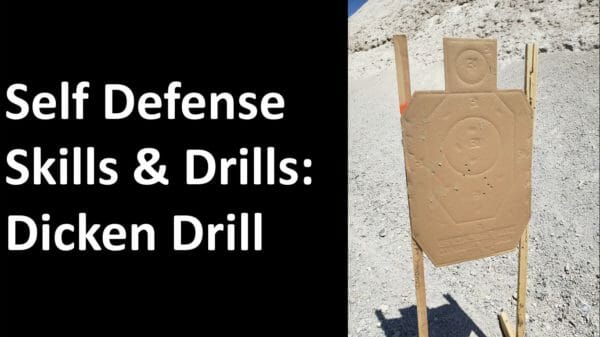
U.S.A. –-(AmmoLand.com)- By now, I’m sure we’ve all heard the story of Eli Dicken, who singlehandedly stopped an active shooter at the Greenwood Mall in Indiana. You’ve probably also seen some viral posts floating around about the so-called “Dicken Drill,” giving folks an opportunity to recreate what is currently understood as the events of that day.
Initially, I was planning on holding off on shooting the drill myself, waiting for more data to come forth about the Greenwood Mall shooting. However, I recently had the chance to shoot the drill, and have some opinions of my own to counter some of the discussions floating around online. With that being said, let’s check out the Dicken Drill.
Setting Up the Drill
The equipment requirements for firing the Dicken Drill are very simple. You’ll need a single silhouette target, ideally an IDPA torso, IALEFI-Q, or something similar. Place this target at 40 yards from your firing position. On your person, you’ll need a pistol, which will be worn concealed. Only one magazine is needed, loaded to 10 rounds total in the gun; reduced capacity guns will need a reload to achieve 10 rounds. Some way to measure time is also necessary to record your par time.
Scoring the Dicken Drill
There are two major ways of scoring the Dicken Drill. Both maintain the same distance, par time, rounds fired, and start from concealment but differ in the scoring method. Additionally, both are supposed to be shot cold, with no warm-up.
The first is what we’ve likely all seen through a viral meme. This is based on USPSA Hit Factor scoring and uses a USPSA torso to achieve its related score. Shooters use Hit

